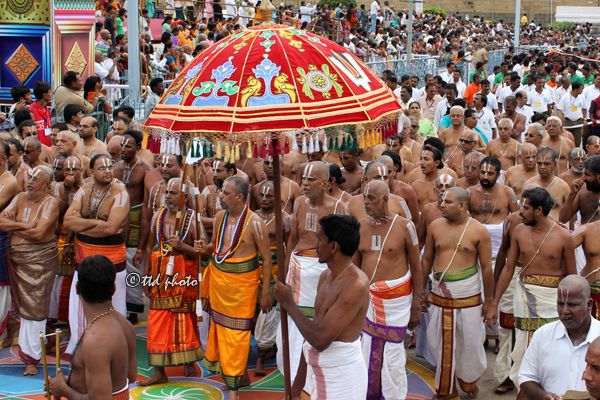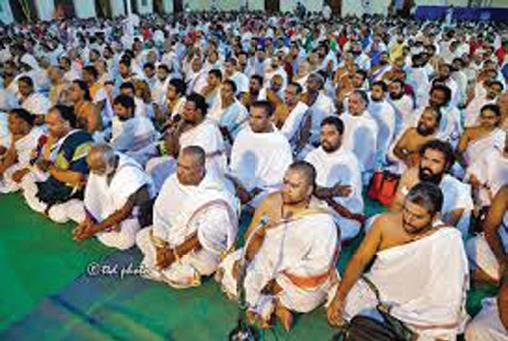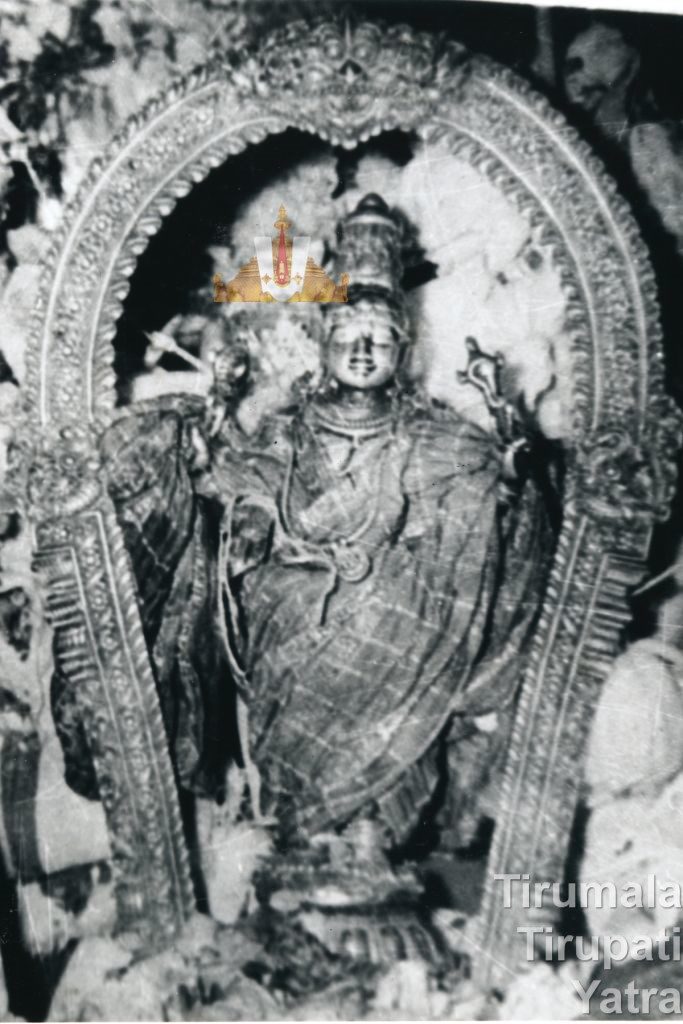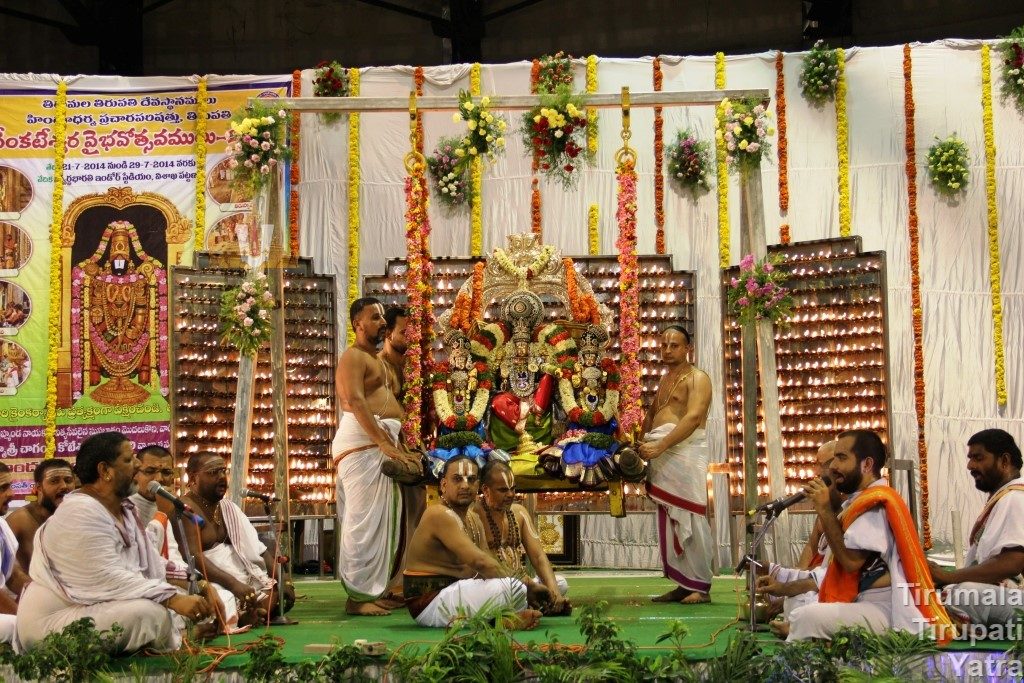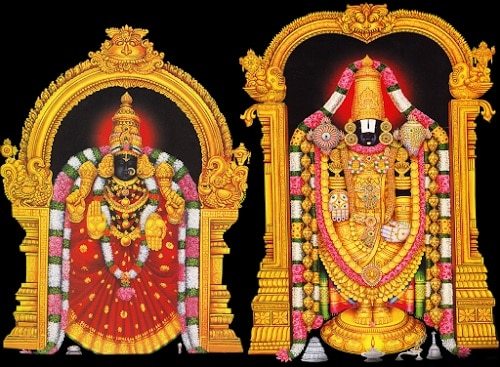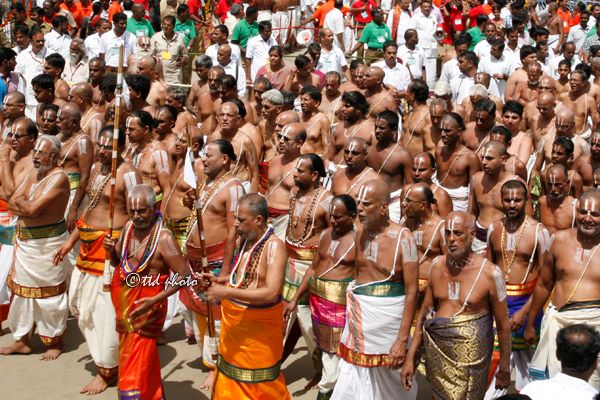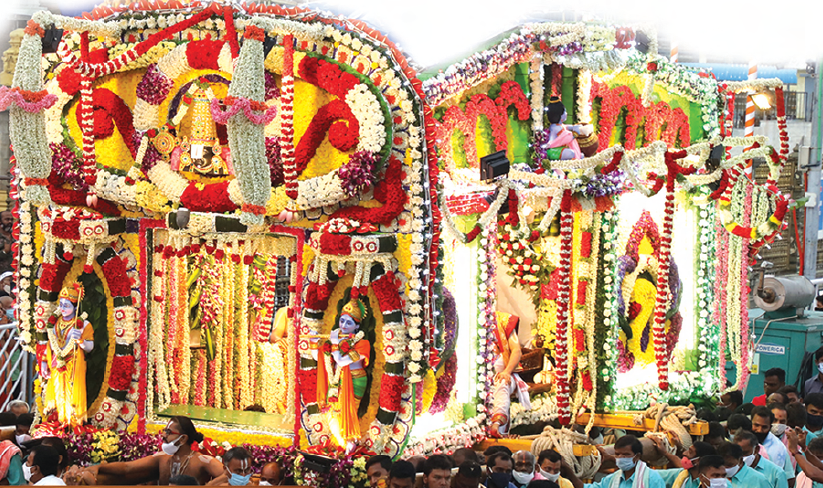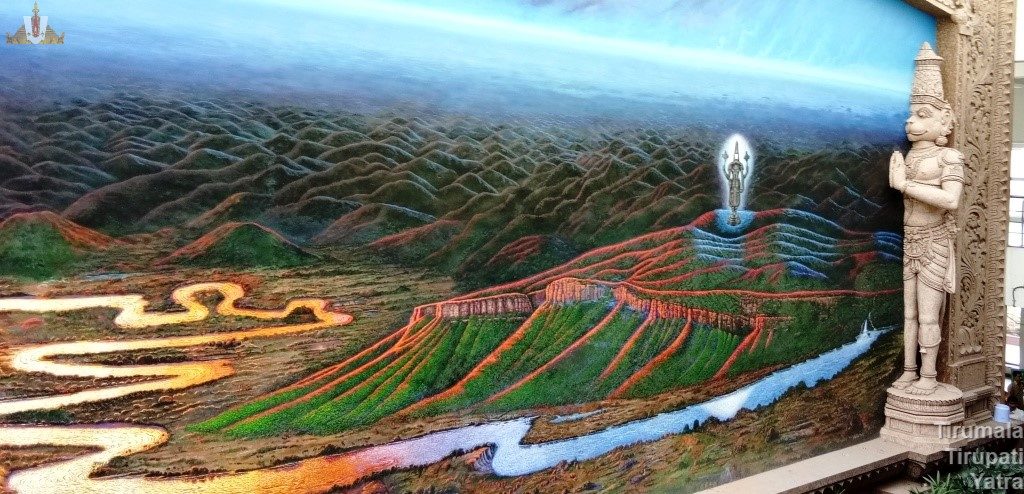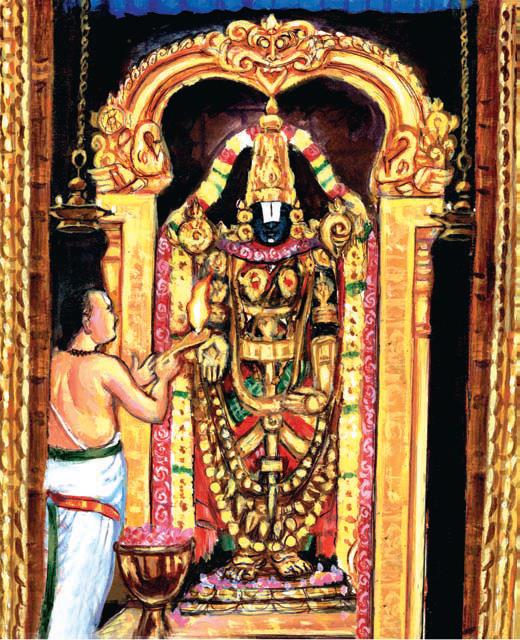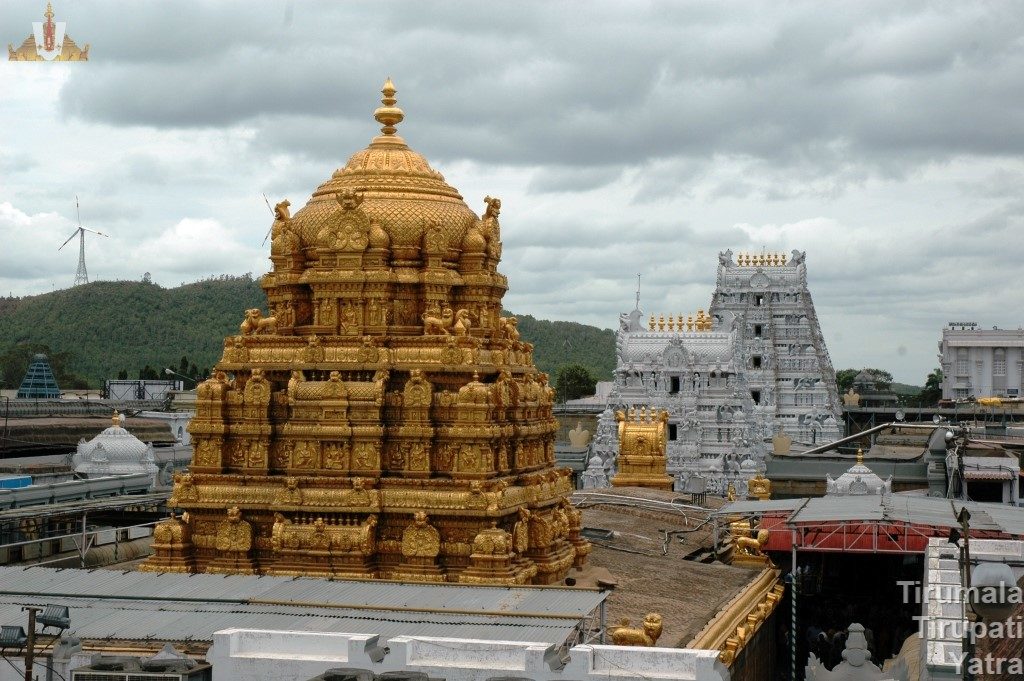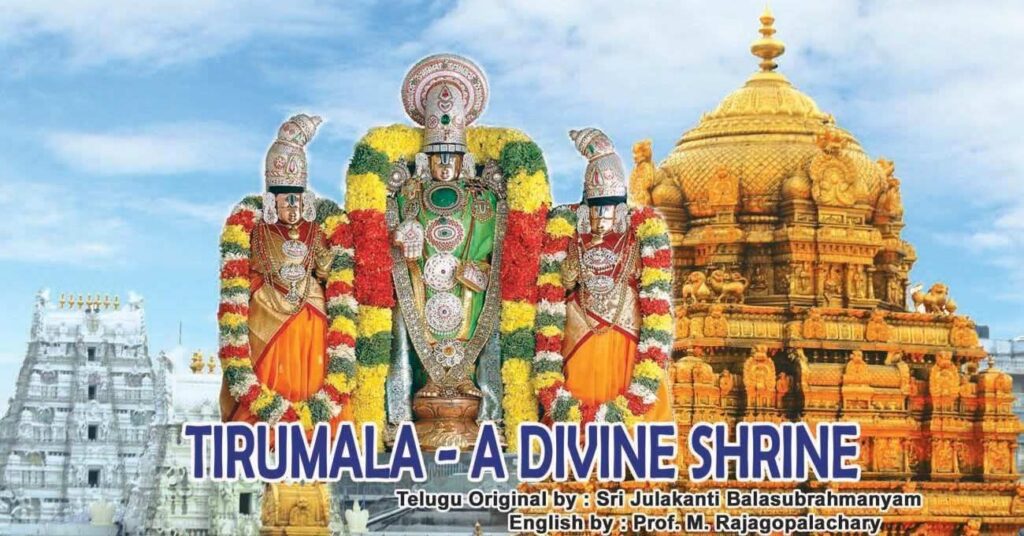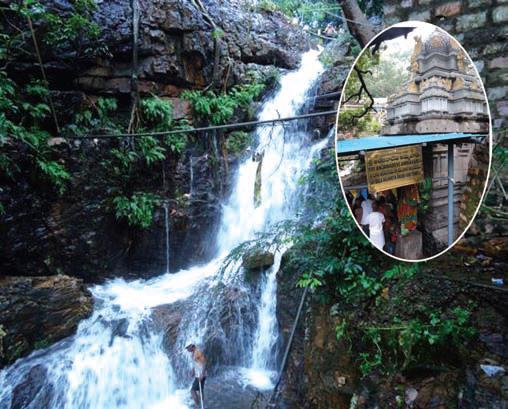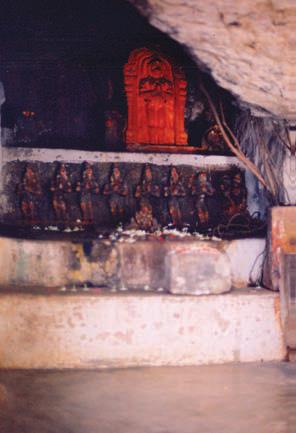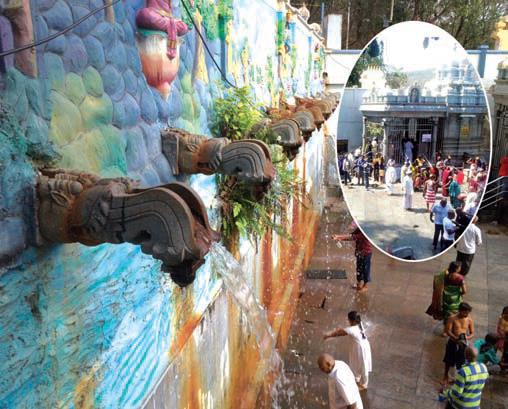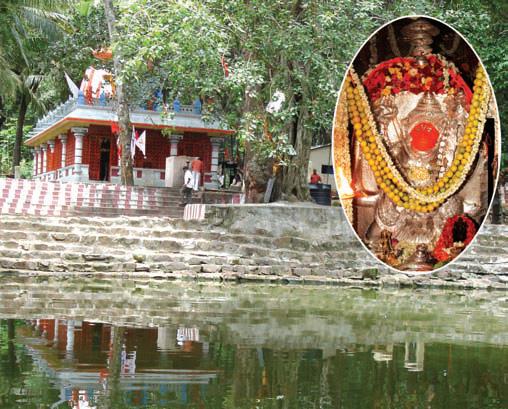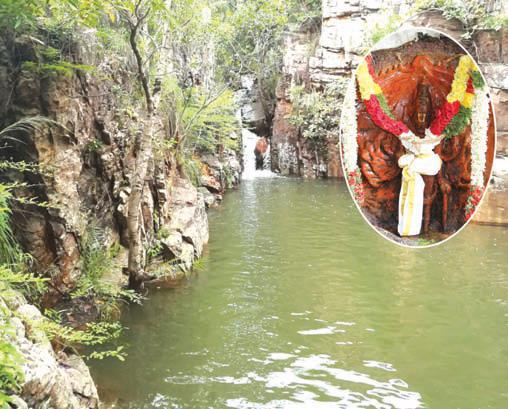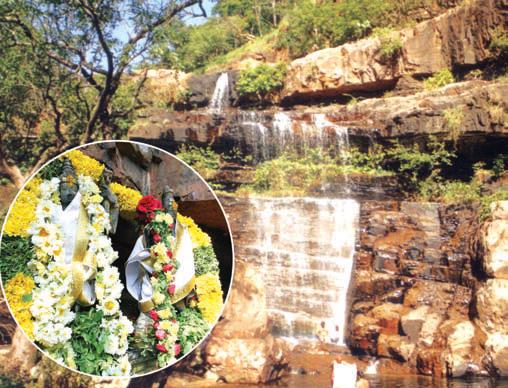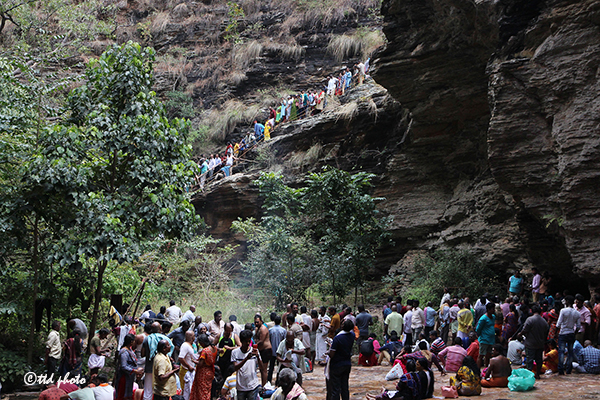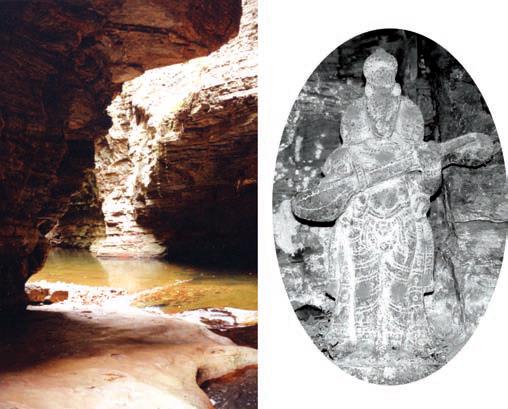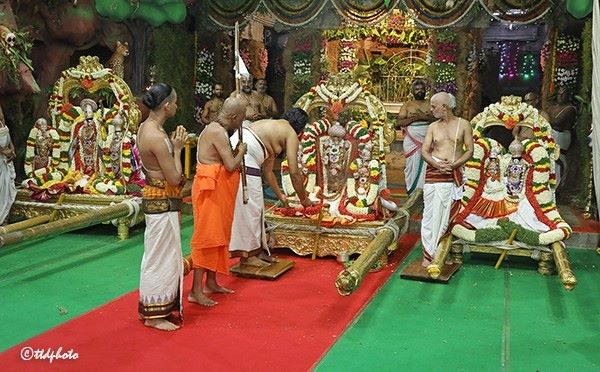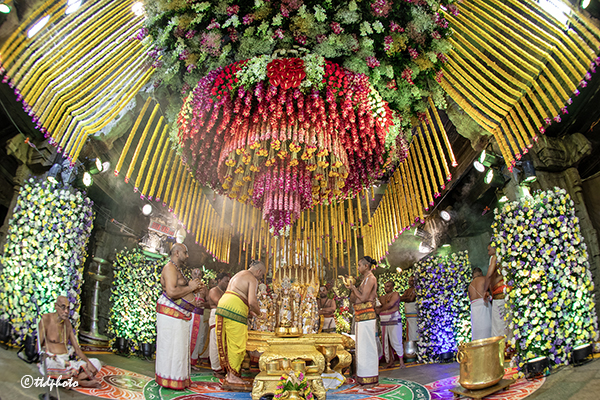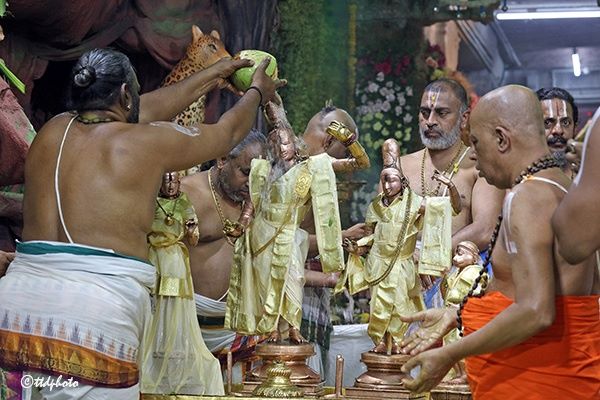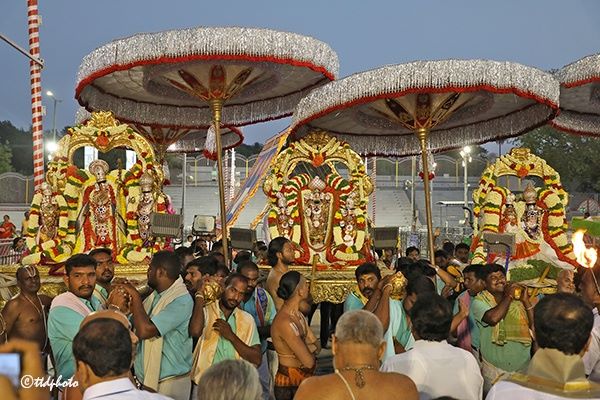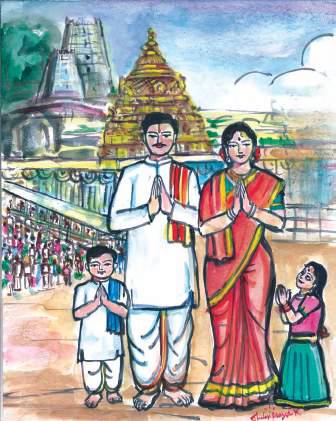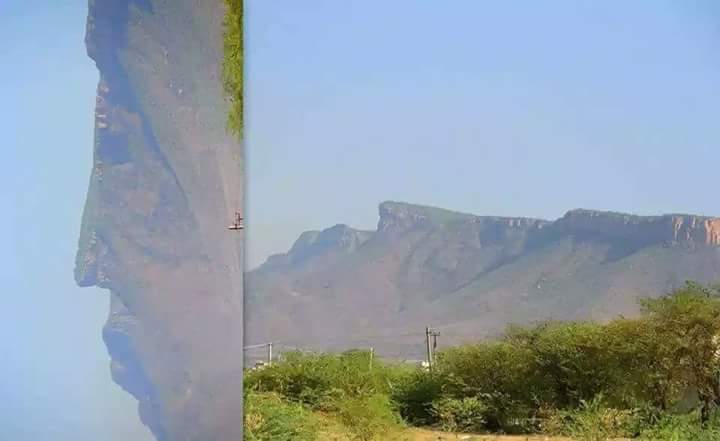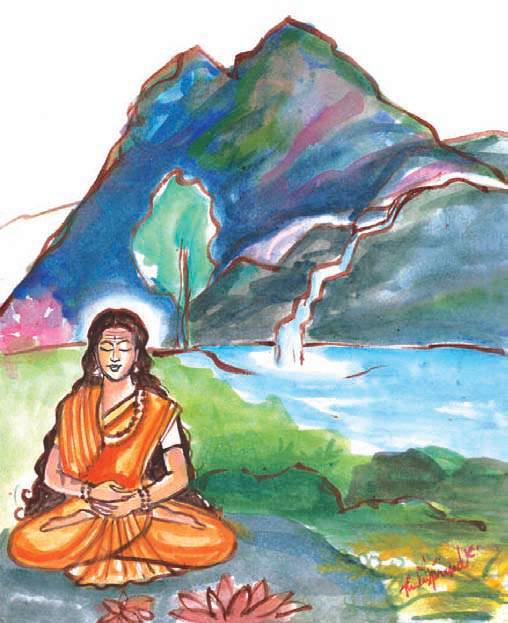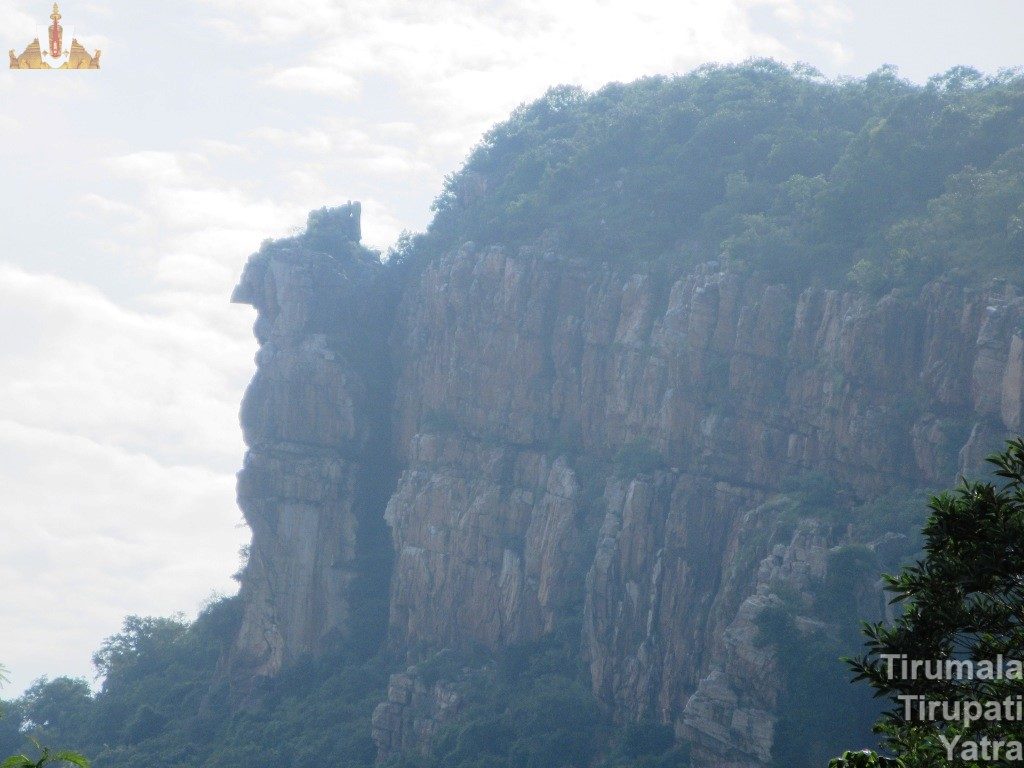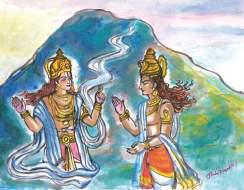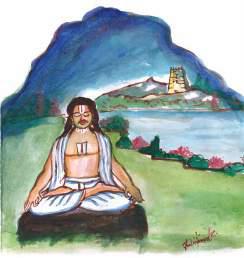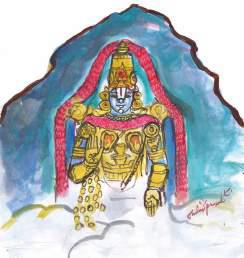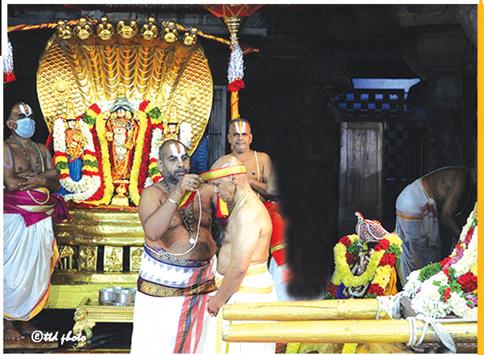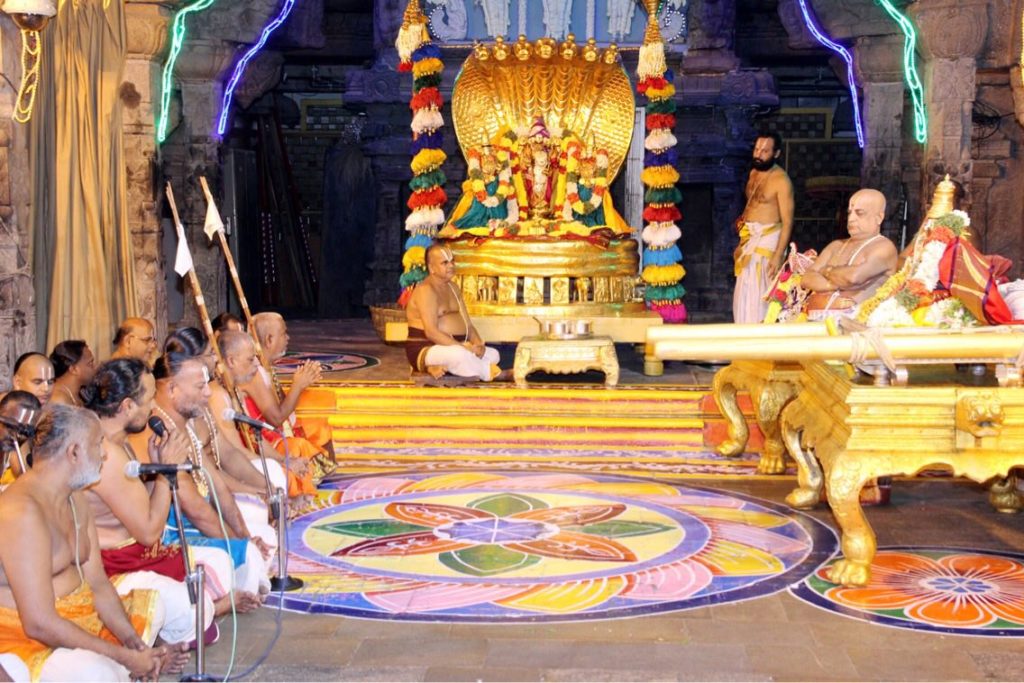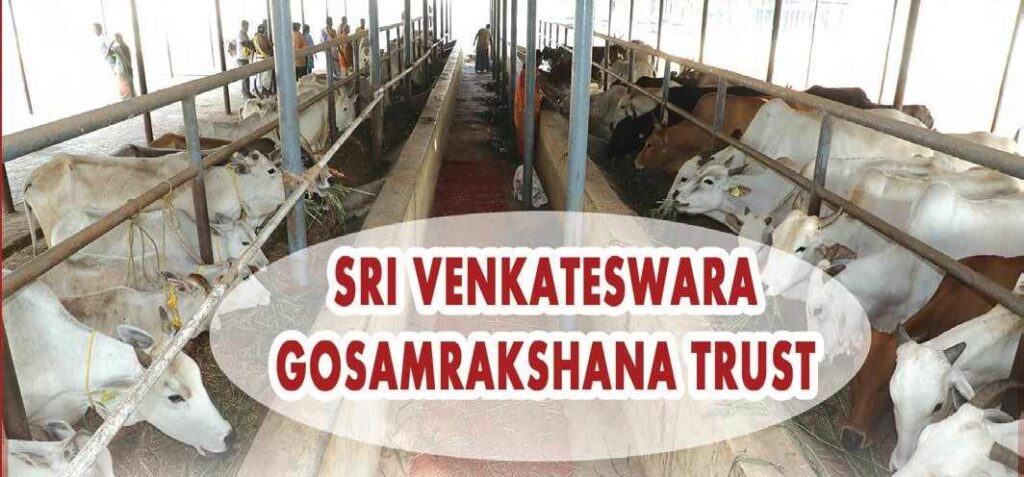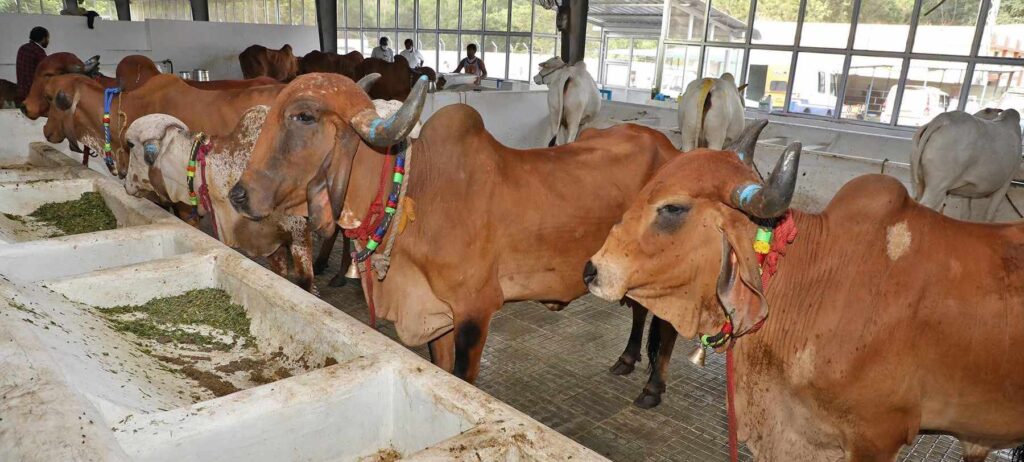Goddess Mahalakshmi is Vyuha Lakshmi
Goddess Mahalakshmi is Vyuha Lakshmi and Yoga Lakshmi. Vyuha- means a secret strategy, a divine scheme, a plan or a strategy. Lakshmi Devi reaching the hridaya sthana of Lord Vishnu happened secretly, very naturally. Their divine scheme is to protect the world just as parents care for their children.
And as a typical mother Vyuha Lakshmi protects us, her children in a very caring manner, taking our side and convincing Her consort not to punish harshly for the wrongs done by us – because She is compassion personified – ‘Kaarunya Vigraha’.
“Para”, “Vyuha”, “Vibhava”, “Antharyami”, and “Archa” are the five forms of the Lord as per agama shastra. Vyuha form exists in the Vedas and the Upanishads which contain the divine scheme, the plan of the whole creation, the relation between the creator and the creation, and the relation between the creation and the beings created.
The whole scheme of binding all this is called “Vyuha”. The entire process of creation is a divine Vyuha (strategy).
The primordial couple Sri Maha Vishnu and Sri Mahalakshmi have a strong ‘Sankalpa’ to rescue the ‘Samsara’ from sins and concomitant sufferings. Their hearts respond with ‘anukampa’ – compassion arising out of empathy towards their children, their creation.
Viraha Lakshmi –> Veera Lakshmi -> Vyuha Lakshmi
When Goddess Mahalakshmi left the seven hills of Tirumala and established herself at Tiruchanur as Sri Padmavathi Devi, she- came to be known as Swatantra Veera Lakshmi as per Vaishnava tradition. It is said that She is actually “Viraha Lakshmi” (viraha meaning ‘the state of feeling the pangs of separation’) as She was away from Her Lord – but in usage seemed to have become Veera Lakshmi.
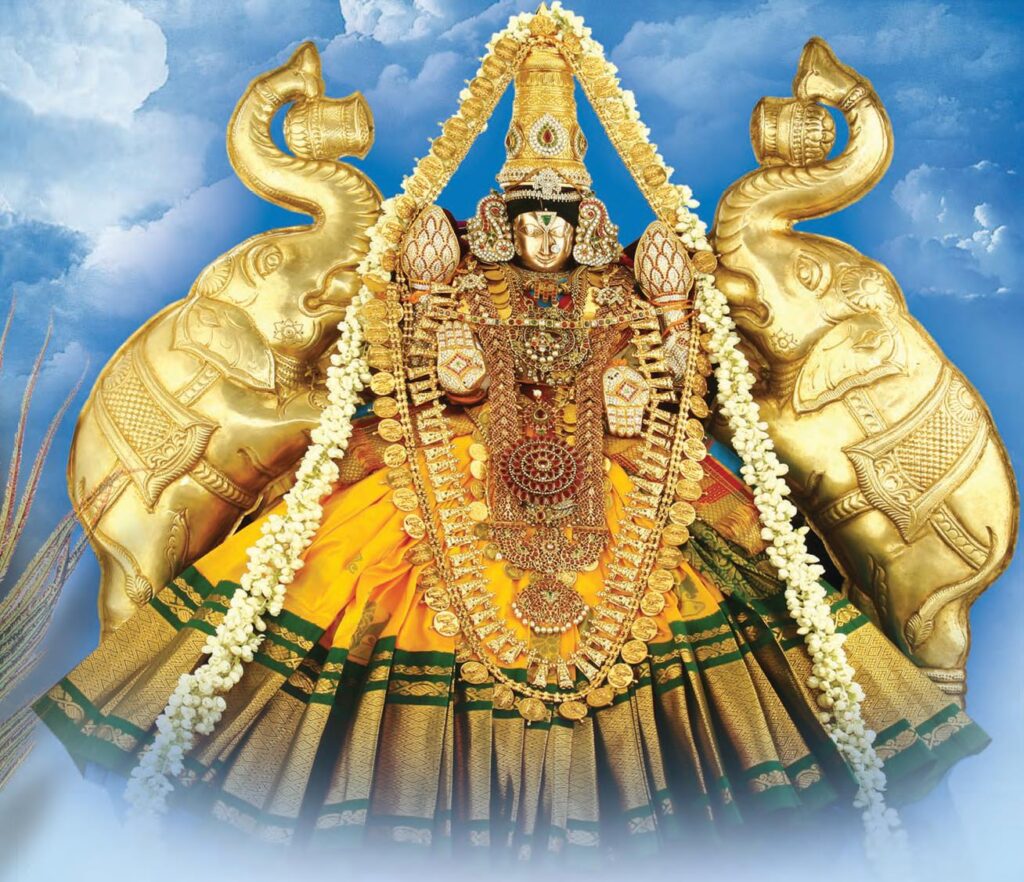
Then She became “Vyuha Lakshmi” as She was lovingly placed on the bosom of Her Lord. This is done as a divine scheme, a plan by the Lord to have his consort forever on his bosom – and it was done secretly, very naturally, but not openly – only the two of them knew about it – the Lord who invited Her onto His bosom and Lakshmi Devi who was eager to reside there – that is why She is called ‘Vyuha Lakshmi’.
Since She is ‘Sri’ and is residing on His bosom, He became “Srinivasa”.
Vyuha Lakshmi in Tirumala
In the temple of Tirumala, Vyuha Lakshmi is found on the right side of the bosom of the self-manifested vigraha (icon) of Lord Sri Venkateswara and She is also seen consecrated in the form of a gold image which is hung to a gold chain that adorns the Dhruva Bera of Srivaru to the right side of the chest.
She will be seated in Padmasana posture with lower right and left hands in Abhaya and Varada pose, and the upper right and left hands holding her favourite lotuses, with a compassionate smiling face or with only two hands (dvibhuja) holding lotuses in both the hands.
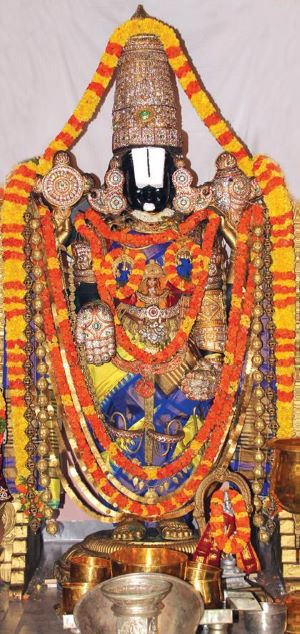
Every morning as part of nitya aradhana, after the usual Thomala Seva and Koluvu, the deity of the Lord is worshipped with ‘Kesavadi Chaturvimshati Namavali’ (24 names of the Lord) and ‘Sri Venkateswara Sahasranamavali‘, offering Tulasi leaves at the lotus feet of the Lord.
Then the worship of Vyuhalakshmi follows with the chaturvimshati namavali’, the 24 names of Vyuhalakshmi from Varaha Puranam – and the beauty of that worship is that the Tulasi (basil) leaves offered to the lotus-feet of the Lord are again offered to both the consorts of the Lord, goddess Vyuhalakshmi and goddess Padmavathi devi present auspiciously on the Lord’s bosom.
24 names of Vyuha Lakshmi
The 24 powerful sacred names of Devi Vyuha Lakshmi are –
- Sriyai namah,
- Lokadhaatre namah,
- Brahmamatre namah,
- Padmanetrayai namah,
- Padmamukhyai namah,
- Prasannamukha padmayai namah,
- Padmakantanyai namah,
- Bilva vansthaayai namah,
- Vishnu patnyai namah,
- Vichitra kshomadhaarinyai namah,
- Ritushronyai namah,
- Pakvabilva phalaapeena tungasthanayai namah,
- Suraktapadma karapaada talayai namah,
- Shubhayai namah,
- Suratnaagada keyura kaancheenoopura shobhitaayai namah,
- Yaksha kardama samlipta sarvaangaayai namah,
- Katakojwalayai namah,
- Mangalyaabharana Chitramuktaaahaaryai vibhushitayai namah,
- Taatankairava tantaisya shobhamaana mukhaambujaayai namah,
- Padmahastayai namah,
- Harivallabhayai namah,
- Rugyajussaamaroopaayai namah,
- Vidyaayai namah,
- Abdhidaayai namah,
- Sri Mahalakshmyai namah,
- Sri Padmavatyai namah,
- Sreem Shriyai namah
Vakshasthala Avasthana Stabakam
Sri Varaha Puranam has a beautiful Stabakam (hymn) called “Vakshasthala avasthana Stabakam”. The entire Stabakam pays glorious honour to Vakshasthala Lakshmi in 26 slokams. It explains about the story of how Mahalakshmi reached the bosom region of the Lord, and about all her compassionate attributes.
Devotees who chant Sri Lakshmi Sahasranama follow it with this beautiful sacred Stabakam or Sthavam.
“Aum sreem aum namah, paramalakshmyai Vishnu vaksha sthitaayai, Ramaayai, aasritha taarakaayai, namo vahnijaayai Sree Vyuhalakshmyai namo namah” is one of the slokas to be chanted to be graced by Sri Vyuha Lakshmi.
SRI VYUHA LAKSHMI MANTRAM
(Srivarahapurane Venkatachala Mahatmye Srivyuhalakshmi Mantra Stotranama Ekonatrinshat Adhyayah)
Dayaalola Taragjaakshee Poornachandra Nibhanana |
Jananee Sarvalokanam Mahalakshmihi Haripriyaa ||
Sarwapaapa haraasyaiva praarabdaswapi karmanah |
Samhrutautu kshamaasyaiva sarva sampat pradaayini ||
Tasyaah Vyuha Prabhedaastu Lakshmih Kirtirjayeti Cha |
Tatra yaa vyuhalakshmih saa mugdha karunya vigraha ||
Anaayaasena Saa Lakshmihi Sarvapaapa Pranasini |
Sarvaishwarya Prada Nityam Tasyah Mantra Midam Sruna ||
Vedadimaayai Matrecha Lakshmai Nathipadam Vadeth |
Parameti padham Choktwaa Lakshmaah Iti padam Tatah ||
Vishnu vaksha sthitaayai syaatmaya sri tarikaa tatah |
Vahnijayaantha mantroya mabheeshtardha suradrumah ||
Dvibhujaa Vyuhalakshmeehi Syaat Baddhapadmasana Priyaa
Srinivasaagja Madhyasthaa Sutaraam Keshavapriyaa ||
Tameva sharanam gachha sarvabhaavena satvaram |
Sarvasampatkarim devim sarva saubhagya daayineem ||
(Iti Srivarahapurane Venkatachala Mahatmye Srivyuhalakshmi Mantra Stotranama Ekonatrinshant adhyayah Sampoornam)
– Smt. Ambika Ananth
